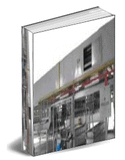 Manufacturer:
Manufacturer: We intend to manufacture medical/surgical tubings from natural rubber latex. These are for transfusion, anaesthetic apparatus, tourniquets, etc. Please explain what the process would entail.
John Woon (Senior Latex and Rubber Consultant): I suggest you try extrusion with heat sensitised latex compound. A prevulcanised latex is preferred to post-vulcanisable latex compound. The ammonia must first be reduced to pH to 7.0 - 7.5. You might have to use formaldehyde solution for this. This is followed by the addition of a heat sensitising agent one good example of which is Polyvinyl methy ether.
Once your latex is heat sensitised, it must be stored at temperature below 20°
C to prolong its shelf life.
The latex from a tank at a constant head is then pass through a glass extrusion tube (in which there is a glass rod) through gravity. The extrusion tube is being heated in a jacket with hot water and maintained at a 50°
C to 60°
C.
The extrudate ( i.e. tubing) emerges from the outlet of the glass extrusion tube in a firmly gelled state and is allowed to go into a tray where it is leached, dried and vulcanised (if necessary). Details of latex formulation, compounding, pH adjustment and the extrusion equipment set-up have been sent to you separately.
For short tubings you could use the simpler coagulant dipping process.

 The hysterisis properties if Nitrile rubber are poorer than natural rubber and SBR. Nitrile rubber products are therefore expected to have high heat built up on flexing.
The hysterisis properties if Nitrile rubber are poorer than natural rubber and SBR. Nitrile rubber products are therefore expected to have high heat built up on flexing. 




















































.jpg)
.jpg)



.jpg)
.jpg)
.jpg)
.jpg)
.jpg)
.jpg)
.jpg)
.jpg)
.jpg)
.jpg)
.jpg)
.jpg)
.jpg)
.jpg)
.jpg)
.jpg)
.jpg)
.jpg)












































